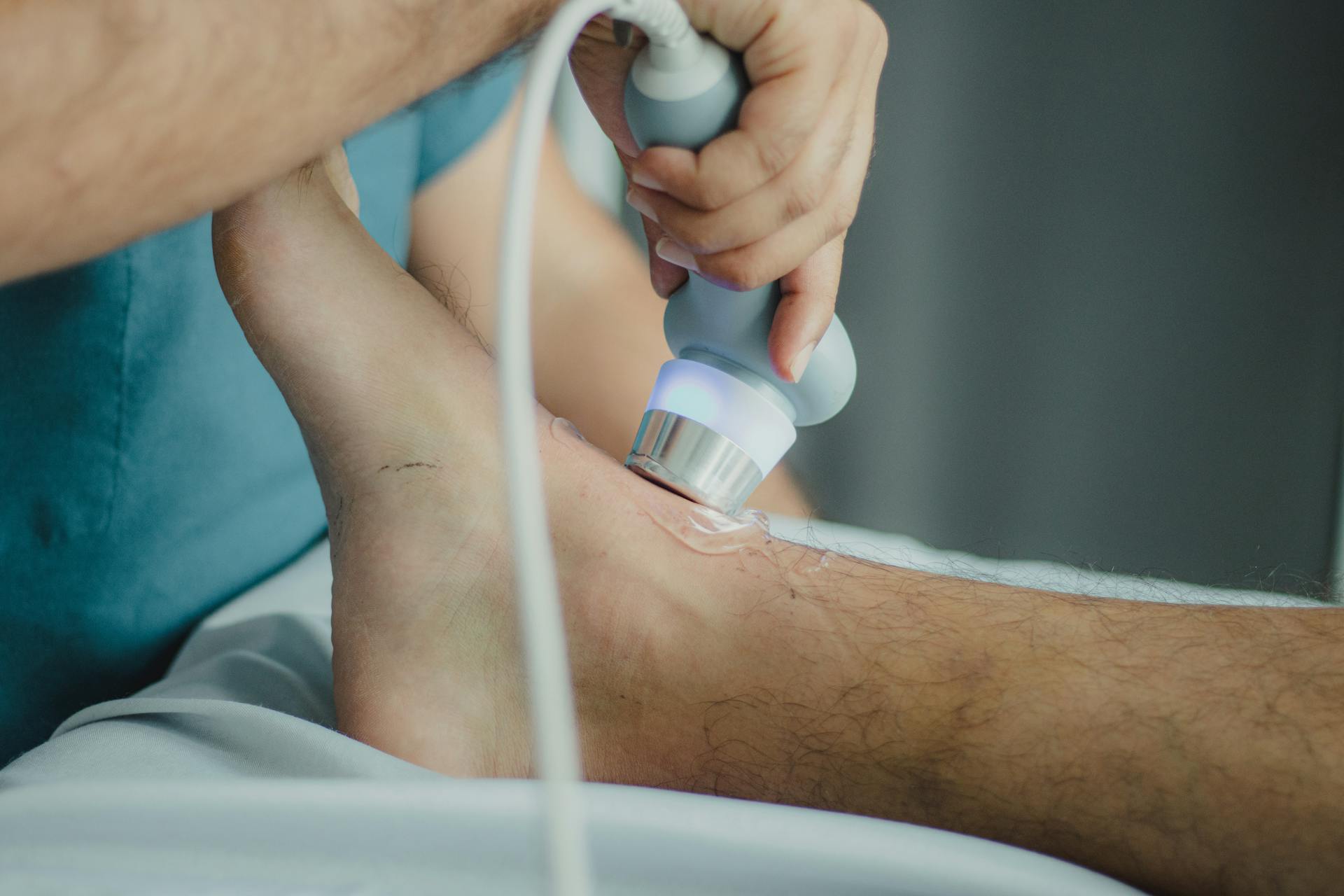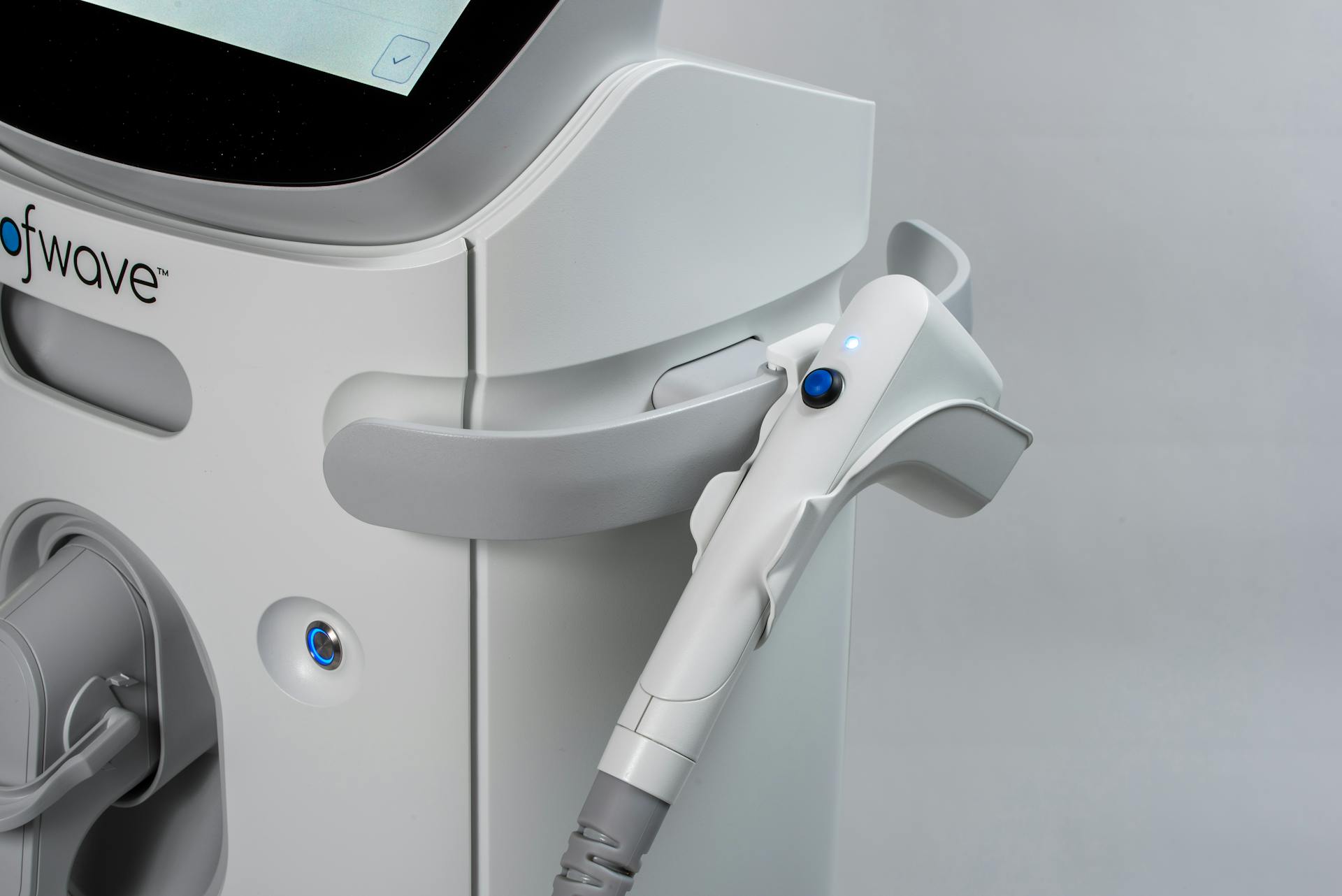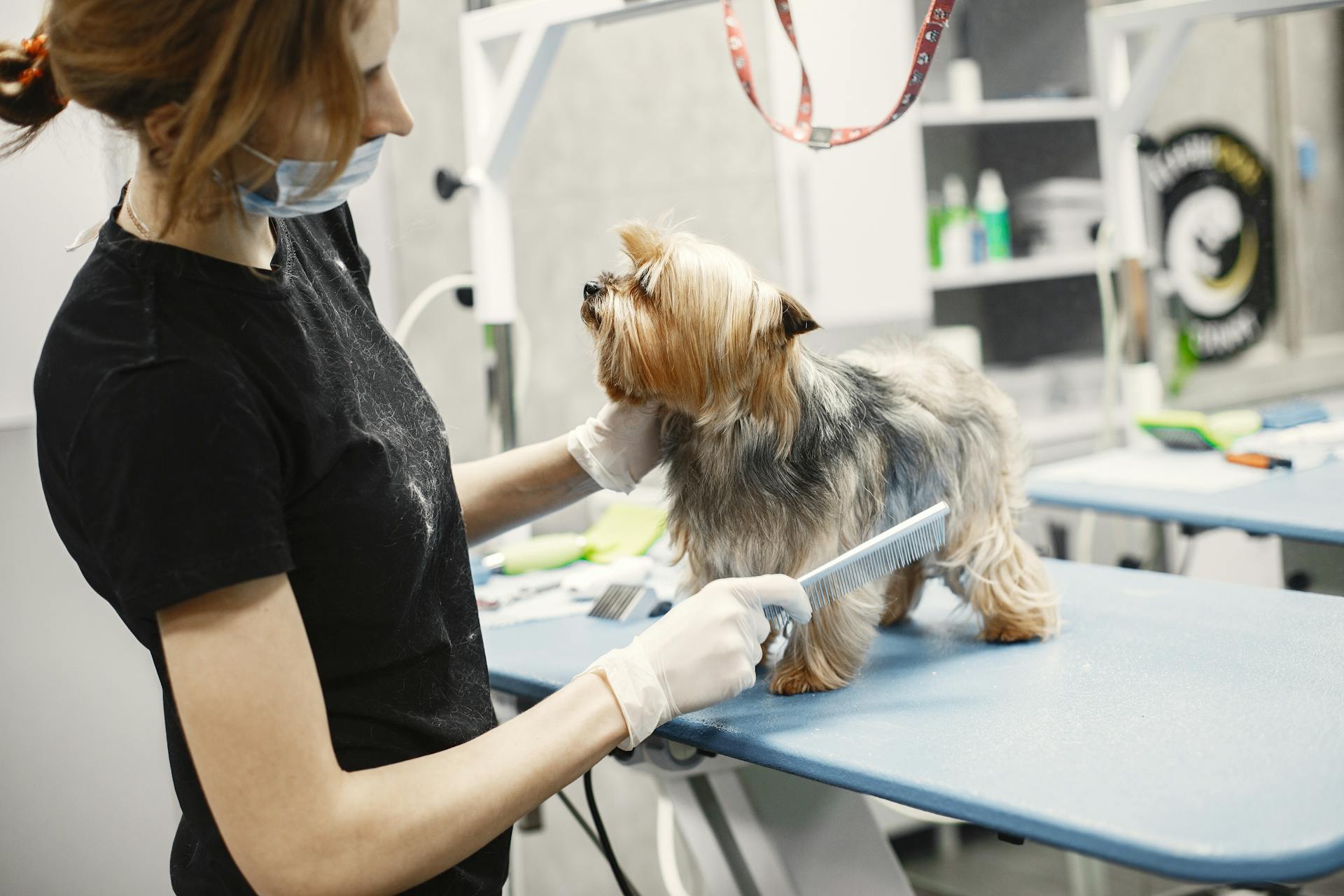
If you're dealing with pyometra, a painful and potentially life-threatening condition, you're likely eager to explore non-surgical treatment options.
The good news is that there are indeed alternatives to surgery, which can be a relief for many pet owners.
One non-surgical option is medical management, which involves administering antibiotics and pain medication to help manage the infection and alleviate symptoms.
This approach can be effective, especially if the pyometra is caused by a bacterial infection.
Discover more: Shih Tzu Ear Infection Home Treatment
What is Pyometra?
Pyometra is a serious medical condition that occurs when a uterus becomes infected and fills with pus. It's a life-threatening condition that requires prompt treatment.
The infection can be caused by a variety of factors, including bacterial vaginosis, endometritis, and foreign bodies in the uterus. This can happen to any female dog, but it's more common in older dogs.
Symptoms of pyometra include vomiting, diarrhea, lethargy, and loss of appetite. In severe cases, the dog may also exhibit abdominal pain and difficulty breathing.
Pyometra is a medical emergency that requires immediate attention from a veterinarian. If left untreated, it can lead to sepsis, organ failure, and even death.
When to Choose Medical Management
Medical management is a viable option for certain cases of pyometra. If your dog is relatively young (<6 years), otherwise healthy, and is a genetically valuable breeding animal, medical management may be the best choice.
In some cases, surgery may not be immediately possible due to a medical condition. If your dog is otherwise stable but has a condition that precludes immediate surgery, medical management can help stabilize them before they become anesthetic candidates for later ovariohysterectomy.
Younger dogs tend to have better fertility outcomes after medical management, while older dogs may have lower fertility rates.
Antimicrobial Therapy
When choosing medical management for a dog with pyometra, antimicrobial therapy is a crucial aspect of treatment.
Initial empirical antimicrobial therapy should cover E. coli, as it's the primary bacteria isolated from up to 90% of canine pyometra cases.
Amoxicillin-clavulanate or a combination of penicillin and fluoroquinolone are good first options while culture and sensitivity results are pending.
Injectable antimicrobial therapy may be considered for dogs that experience emesis due to prostaglandin use.
Ampicillin 10–20 mg/kg IV q6h +/- enrofloxacin is a common choice for injectable therapy, but it's essential to administer it slowly over 15–20 minutes.
Amoxicillin-sulbactam 10–20 mg/kg IV q8h is another option that has been used empirically with success, but it's recommended to reserve this drug for cases of sepsis.
Approach
The first step in treating pyometra without surgery is to stabilise the dog, focusing on restoring fluid volume and perfusion pressure, correcting electrolytes, and initiating antimicrobial therapy.
Critically ill patients require close monitoring, and hospitalisation is essential for this purpose.
Medical management protocols for pyometra treatment share common goals, which include stabilising the patient, eliminating the effects of progesterone, inducing uterine contractions, and managing bacterial infection.
To eliminate the effects of progesterone, medical management protocols use progesterone receptor antagonists, dopamine agonists, and/or prostaglandins.
These treatments aid cervical relaxation, permit uterine contractions, improve uterine local immunity, and allow uterine expulsion of purulent contents.
For another approach, see: Dog Flea Medicine Side Effects
In addition to these treatments, various biomarkers can be used to monitor and predict patient outcomes in critically ill patients.
To help you understand the treatment approach, here are the key steps:
- Stabilise the patient
- Eliminate the effects of progesterone
- Induce uterine contractions
- Manage bacterial infection
By following these steps, you can help your dog recover from pyometra without surgery.
Comparing Surgical and Medical Management
The prognosis for survival in pyometra cases is good, especially when selected appropriately. However, the prognosis for fertility varies greatly, ranging from 14% to 92%.
Fertility in younger dogs is generally better than in older dogs. Pyometra recurs in approximately 20% of cases, which is something owners should be aware of before starting medical treatment.
Pregnancy is considered protective, so breeding the dog on her next oestrus cycle or undergoing ovariohysterectomy beforehand is recommended.
Key Points
Canine pyometra is a life-threatening disease characterized by suppurative inflammation and accumulation of exudates within the uterus.
Medical approaches have shown success in treating this condition, especially for patients with high genetic value or those that are high-risk anaesthetic candidates.
Medical protocols aim to stabilize the patient, eliminate the effects of progesterone on the reproductive tract, induce uterine contractions, and manage bacterial infection.
Progesterone receptor antagonists (e.g. aglepristone), dopamine agonists, and/or prostaglandins are used to eliminate the effects of progesterone.
The prognosis for survival in appropriately selected cases is good, but the prognosis for fertility varies widely (14–92%).
Pregnancy is considered protective, so the female dog should either be bred on her next oestrus cycle or undergo ovariohysterectomy beforehand to prevent future occurrences of pyometra.
Diagnosis and Detection
Pyometra diagnosis involves a physical checkup, which is a crucial step in identifying the condition. The physical checkup helps veterinarians to identify any signs of pyometra, such as a swollen or painful abdomen.
Blood tests are also an essential part of pyometra diagnosis. They help veterinarians to detect any signs of infection or inflammation in the body.
X-rays or ultrasound (USG) are used to confirm the diagnosis of pyometra. These imaging tests help veterinarians to visualize the uterus and detect any signs of infection or fluid accumulation.
Frequently Asked Questions
How can I treat my dog for pyometra at home?
Home treatment for pyometra is not recommended. Seek immediate veterinary attention for proper diagnosis and treatment to prevent complications and ensure the best possible outcome for your dog
Can open pyometra go away on its own?
No, open pyometra is a life-threatening condition that requires immediate medical attention and cannot resolve on its own. Untreated, it can lead to serious complications, including septicemia and death.
What is the best medicine for pyometra in dogs?
For pyometra treatment in dogs, the recommended medications are fluoroquinolones, such as enrofloxacin, and amoxicillin/clavulanate. Consult a veterinarian for proper diagnosis and treatment as pyometra requires prompt medical attention.
Sources
- https://preventalitter.org/pyometra
- https://bettervet.com/resources/pet-diseases/pyometra-in-dogs
- https://veteducation.com/medical-management-of-canine-pyometra/
- https://www.dailypaws.com/dogs-puppies/health-care/dog-conditions/pyometra-in-dogs
- https://vetic.in/blog/pet-health/pyometra-in-dogs-signs-causes-diagnosis-treatment-and-prognosis/
Featured Images: pexels.com


